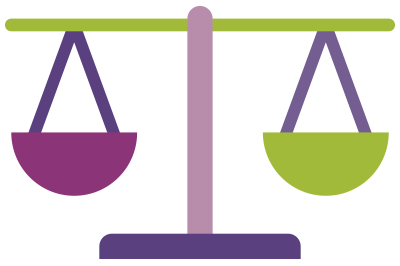Pharmacy Board of Australia
2015/16 Annual Report Summary
At a glance: Regulating pharmacists in 2015/16
This annual report summary provides a snapshot of our work regulating almost 30,000 registered pharmacists in the financial year to 30 June 2016.
A more detailed profile, encompassing data relating to all 14 National Boards in Australia, is published in AHPRA and the National Boards’ 2015/16 annual report
657,621 health practitioners in 14 professions registered in Australia in 2015/16
29,717 registered pharmacists
This is 4.5% of the registrant base

Registration grew by 4.7% from 2014/15

61% women
39% men

7,280 registered students; down 1.5%1

3,324 new applications for registration received

2,516 criminal history checks were carried out for pharmacists, resulting in:
86 disclosable court outcomes;
1 regulatory action needed to be taken.
311 notifications (complaints or concerns)2 were lodged with AHPRA about pharmacists

301 notifications were closed3

13 complaints were made about possible statutory offences relating to pharmacy services
13 statutory offence matters were closed
Note:
- Compared with 2014/15.
- This figure refers only to matters managed by AHPRA. For total notifications received about the profession, including matters managed by the Health Professional Councils Authority (HPCA) in NSW, refer to Table 4.
- This figure represents complaints managed and closed by AHPRA, and excludes matters managed by the HPCA.
About this report
This report provides a profession-specific view of the Pharmacy Board of Australia’s work to manage risk to the public and regulate the profession in the public interest in 2015/16.
The Board has worked in close partnership with the Australian Health Practitioner Regulation Agency (AHPRA) to provide all Australians with a safe, qualified and competent workforce under the National Registration and Accreditation Scheme (the National Scheme).
Information included in this report is drawn from the data published in the 2015/16 annual report by AHPRA and the National Boards, and was correct as at 30 June 2016.
Whenever possible, historical data are provided to show trends over time, as well as comparisons between states and territories.
For a wider context, and to compare the profession against national data from all 14 professions regulated by National Boards under the National Scheme, this report should be read in conjunction with the 2015/16 annual report. Download the report.
Message from the Chair, Pharmacy Board of Australia
The Pharmacy Board of Australia makes decisions about the registration and regulation of pharmacists and pharmacy students registered in Australia.
We assess applications for registration, including for practitioners who trained overseas, approve accreditation standards and accredited courses of study, and fund accreditation activities required under the National Law. We also develop national standards, codes and guidelines for the profession.
The Board handles the notifications process for any complaints or concerns lodged with AHPRA about pharmacists, including investigations and disciplinary hearings. Our decision-making is evidence-based, follows agreed regulatory principles and puts public safety first.
Practitioner representation from each state and territory helps to ensure consistent implementation of the National Law at a local level. These practitioners are supported by a public perspective, which comes from community representatives from four states. Additional practitioner members have been appointed to the Notifications Committee to facilitate decision-making.
Stakeholder input was integral to the Board’s completion of significant work in 2015/16. We consulted widely before publishing revised registration standards and guidelines for pharmacists.
During the year, the Board also participated in the review of the competency standards for pharmacists and contributed to the funding of the review.
Written examinations for interns were administered on behalf of the Board by the Australian Pharmacy Council, oral examinations for interns were administered by AHPRA and trained pharmacists were appointed by the Board as examiners.
I sincerely thank all Board members for the dedication, effective contributions and professional approach to the work of the Board, all pharmacists appointed to the Board’s committees for their invaluable contributions, and the Board’s appointed examiners. I also acknowledge and thank the previous Chair of the Board, Mr Stephen Marty, for his dedication and outstanding service to the Board.
I also acknowledge the contributions and support from the AHPRA executive team and the support staff in the national and jurisdictional offices.
Mr William Kelly was appointed Chair from 31 August 2015. Mr Stephen Marty was Chair of the Pharmacy Board of Australia during July and August 2015.

Mr William Kelly
Chair, Pharmacy Board of Australia
Members of the National Board in 2015/16
- Mr William Kelly (Chair)
- Mrs Rachel Carr
- Mr Trevor Draysey
- Mr John Finlay (until 30 August 2015)
- Ms Joy Hewitt (from 31 August 2015)
- Mr Ian Huett (30 August 2015)
- Mr Mark Kirschbaum (from 31 August 2015)
- Adjunct Associate Professor Stephen Marty (until 30 August 2015)
- Mr Gerard McInerney (until 30 August 2015)
- Ms Karen O’Keefe
- Ms Bhavini Patel
- Mr Michael Piu (from 31 August 2015)
- Mr Brett Simmonds
- Dr Katherine Sloper
- Dr Rodney Wellard
- Mr Laurence Wilkins (from 31 August 2015)
During 2015/16, the Board was supported by Executive Officer Joe Brizzi.
More information about the work of the Board, including codes, guidelines and information on registration standards, can be found on the Board website.
Message from the Agency Management Committee Chair and the AHPRA CEO
Since the National Scheme began six years ago, AHPRA has worked in partnership with the National Boards to ensure that the community has access to a safe and competent health workforce across 14 registered health professions Australia-wide.
We rely on the expertise and insights of the National Boards to make decisions about the 657,621 health practitioners currently registered in Australia in the interests of the Australian public. It’s a role that Board members commit to with dedication and passion, and the community can be assured that its safety is always their number-one priority.
As at 30 June 2016, there were 29,717 registered pharmacists, comprising 4.5% of all registered practitioners. Overseeing the registration and regulation of the profession is the Pharmacy Board of Australia, with valuable input from professional and community groups.
The Board upholds the values of the National Scheme by taking a risk-based approach to regulatory decision-making and policy implementation, with a continued focus on finding ways to improve effectiveness, efficiencies and timeliness.
In 2015/16, the Board published revised registration standards and guidelines on dispensing medicines. The latter involved a period of extensive collaboration and consultation, not only with stakeholders within the profession but with technical experts, such as the Therapeutic Goods Administration. The Board continues to seek and address feedback on matters unique to the profession to ensure its successful regulation.
We’d like to thank Board members for their continued commitment to ensuring a competent and flexible health workforce that meets the current and future health needs of the community.
We look forward to continuing to work in partnership with the Board.

Mr Martin Fletcher,
Chief Executive Officer

Mr Michael Gorton AM,
Chair, Agency Management Committee
Year in review: Pharmacy Board of Australia
Throughout 2015/16, the Board continued to focus on protecting the public by ensuring the community has access to safe and competent health services from registered pharmacists.
During the year, the Board published revised registration standards as approved by the Ministerial Council. These standards focused on:
- professional indemnity insurance arrangements
- continuing professional development and related guidelines
- recency of practice
- supervised practice arrangements, and
- examinations for eligibility for general registration.
After wide-ranging consultation, the Board also published guidelines on dispensing medicines, practice-specific issues, dose-administration aids and staged supply of dispensed medicines, and proprietor pharmacists.
To address feedback received after the publication of the Board’s guidelines on compounding of medicines, we undertook a further period of consultation with stakeholders in relation to the expiry of compounded parenteral medicines. We gave stakeholders and pharmacists the opportunity to provide feedback in two forums, as well as the chance to comment on the consultation paper published on the Board’s website. The Board will continue to work closely with technical experts, the Therapeutic Goods Administration and other stakeholders to finalise this guidance prior to its publication and implementation.
The Board continues to work on examination quality improvement. This year we engaged an external consultant to conduct an analysis of oral examination and related processes, and a provider to deliver a revised training program to oral examiners.
We also contributed to the revision of the competency standards framework for pharmacists in Australia, in collaboration with a broad range of pharmacy stakeholders.
Communication of all changes made during the year was key to ensuring that all pharmacists remain upto- date in their knowledge of their responsibilities under the Health Practitioner Regulation National Law as in force in each state and territory (the National Law). Throughout 2015/16, we ran a program of communications activities including communiqués, newsletters and information for students and graduates.
These communications, as well as codes, guidelines, policies and a Quick reference guide, are published on our website.
Data snapshot: Regulation at work in 2015/16
The profession in brief
- The pharmacy registrant base grew by 2.4% year on year, to 29,717 in 2015/16.
- New South Wales (NSW) was the principal place of practice for most of these practitioners (9,171); the Northern Territory (NT) was home to the least (217).
- The age bracket with most practitioners was 25–29 (6,269 registrants).
- 2,343 practitioners were under 25 years of age; 115 were aged 80 or over.
- Women comprised 61% of the profession.
About our data
Data in this Board summary are drawn from the 2015/16 annual report, published by AHPRA and the National Boards. Data relating to pharmacists were extracted from national source data that include all 14 health professions regulated by the National Law.
In the following pages you’ll find registration data, including registrant numbers by principal place of practice, age and gender, and data about notifications (complaints or concerns) received about pharmacists in the year to 30 June 2016.
For a further breakdown of data from the 2015/16 annual report by AHPRA and the National Boards, including data relating to other professions and summary reports by state and territory.
Notifications data
Notifications are complaints or concerns that are lodged with AHPRA about registered health practitioners or students practising in Australia.
Our data generally excludes complaints handled by co-regulatory jurisdictions, such as in:
- NSW, where complaints about health practitioners with this state as their principal place of practice (PPP) are not managed by the Board and AHPRA, unless the conduct occurred outside NSW. Complaints about health practitioners where the conduct occurred in NSW are handled by the Health Professional Councils Authority (HPCA) and the Health Care Complaints Commission (HCCC), and
- Queensland, where complaints are received and managed by the Office of the Health Ombudsman (OHO) and may be referred to AHPRA and the relevant National Board. We are not able to report on all complaints about health practitioners in Queensland because we only have access to data relating to matters referred to us by OHO.
Note that some NSW regulatory data published in this report may vary from data published in the HPCA’s annual report. This is due to subsequent data review by the HPCA after submission of initial data to AHPRA. For more information about how complaints about health practitioners are managed in NSW, and for data about complaints made in the state, please refer to the HPCA website.
For data about complaints in Queensland that have not been referred to AHPRA, go to the OHO website.
Registration of pharmacists
As at 30 June 2016, there were 29,717 pharmacists registered across Australia. This represents a national increase of 2.4% from the previous year.
Pharmacists made up 4.5% of all registered health practitioners across the National Scheme. Of these:
- 90.7% held general registration to practise pharmacy, with this cohort of registrants increasing by 2.9% this year
- 5.8% held provisional registration to undertake supervised practice while they progressed towards being eligible for general registration; a decrease of 4.9%
- less than 0.1% held limited registration, which allows internationally qualified pharmacists to undertake supervised practice while they progress towards being eligible for general registration, and
- 3.5% held non-practising registration and could not practise pharmacy; up 2.9% from 2014/15.
There were 7,280 registered pharmacy students at the end of the year; down 1.5% from 2014/15. The Board received 3,324 new applications for registration; down 0.5% from 2014/15. Of these, 48.8% were for general registration and 4.5% were applications to move to the non-practising register. The remaining applications were for provisional or limited registration.
See Tables 1–3 for segmentation of registration data about pharmacists.
As a standard part of the registration process, applicants for initial registration as a health practitioner in Australia must undergo a criminal record check. AHPRA requested 66,698 domestic and international criminal history checks for practitioners across all professions in 2015/16. Of these, 2,516 checks were carried out for pharmacists, resulting in 86 disclosable court outcomes. Conditions or undertakings were imposed on one practitioner’s registration.
Regulation of pharmacists
A total of 570 notifications were received nationally about pharmacists (including HPCA data) in 2015/16. This is an increase of 16.3% from 2014/15. The number of matters received and managed by AHPRA was 311 (excluding HPCA). Notifications about pharmacists represent 5.1% of all notifications received by AHPRA (excluding HPCA) this year.
Nationally, the percentage of registered health practitioners with notifications received during the year was 1.5%. The percentage of registered pharmacists with notifications received was 1.9%.
Immediate action was taken by the Board on 20 matters relating to pharmacists in 2015/16 (compared with 11 instances in 2014/15), excluding matters managed by the HPCA in NSW.
A National Board has the power to take immediate action in relation to a health practitioner’s registration at any time, if it believes this is necessary to protect the public. Immediate action limits a practitioner’s registration by suspending or imposing conditions on it, or accepting an undertaking or surrender of the registration from the practitioner or student. This is an interim step that Boards can take while more information is gathered or while other processes are put in place.
To take immediate action, the Board must reasonably believe that:
- because of their conduct, performance or health, the practitioner poses a ‘serious risk to persons’ and that it is necessary to take immediate action to protect public health or safety, or
- the practitioner’s registration was improperly obtained, or
- the practitioner or student’s registration was cancelled or suspended in another jurisdiction.
There were 34 mandatory notification assessments finalised in 2015/16 (excluding HPCA data); up from 23 in 2014/15. All registered health practitioners have a professional and ethical obligation to protect and promote public health and safe healthcare. Health practitioners and their employers, as well as education providers, also have mandatory reporting responsibilities under the National Law.
Notifiable conduct by registered health practitioners is defined as:
- practising while intoxicated by alcohol or drugs
- sexual misconduct in the practice of the profession
- placing the public at risk of substantial harm because of an impairment (health issue), or
- placing the public at risk because of a significant departure from accepted professional standards.
A total of 301 notifications about pharmacists (excluding HPCA) were closed during the year. This represents 5.8% of all matters closed across all professions. Outcomes included:
- 21.3% resulted in conditions being imposed or an undertaking accepted by the Board
- 29.9% resulted in the pharmacist receiving a caution or reprimand by the Board
- 1% resulted in suspension or cancellation of registration by the Board, and
- 46.8% resulted in no further action being taken by the Board. No further action is taken when, based on the available information, the Board determines there is no risk to the public that requires regulatory action.
As at 30 June 2016, there were 184 open notifications.
There were 236 active monitoring cases involving registered pharmacists (including HPCA). The majority (84 cases) related to suitability/eligibility for registration. For example, they may not have held an approved or equivalent qualification; lacked English language skills; did not meet requirements for recency of practice; or did not meet approved registration standards.
Thirteen new complaints about possible statutory offences relating to pharmacy services were received. These complaints constitute less than 1% of all statutory offence matters received in 2015/16. Almost all new matters related to title protection or advertising concerns. Thirteen statutory offence matters were considered and closed during the year.
Statutory offences are breaches of the National Law, committed by registered health practitioners and unregistered individuals, including:
- unlawful use of a protected title
- performing a restricted act
- holding out (claims by individuals or organisations as to registration), and
- unlawful advertising.
See Tables 4–12 for segmentation of notifications and statutory offence data relating to pharmacists.
Want to know more?
For more data and analysis refer to the 2015/16 annual report.
For more information on the National Law as it applies to each state and territory, see AHPRA's legisltaion.
Note:
- Blank fields in all tables denote zeros.
- No PPP (principal place of practice) includes practitioners with an overseas address.
Note:
- No PPP (principal place of practice) includes practitioners with an overseas address.
Note:
- Data relating to notifications (complaints or concerns) are based on the state or territory of the practitioner’s PPP (principal place of practice).
- Matters managed by AHPRA where the conduct occurred outside NSW.
- The number of matters referred to AHPRA and the National Board by the Office of the Health Ombudsman (OHO).
- No PPP includes practitioners with an overseas address.
- Matters managed by the Health Professional Councils Authority (HPCA) in NSW.
- For 2015/16, notifications are based on the practitioner’s PPP.
- Prior to this, notifications were based on the state or territory where the notification was handled (Responsible Office).
Note:
- Health Professional Councils Authority.
- No PPP (principal place of practice) includes practitioners with an overseas address.
- For 2015/16, notifications are based on the practitioner’s PPP.
- Prior to this, notifications were based on the state or territory where the notification was handled (Responsible Office).
Note:
- No PPP (principal place of practice) includes practitioners with an overseas address.
- For 2015/16, notifications are based on the practitioner’s PPP.
- Prior to this, notifications were based on the state or territory where the notification was handled (Responsible Office).
Note:
- Matters managed by AHPRA where the conduct occurred outside NSW.
- No PPP (principal place of practice) includes practitioners with an overseas address.
- Matters managed by the Health Professional Councils Authority (HPCA) in NSW.
- For 2015/16, notifications are based on the practitioner’s PPP.
- Prior to this, notifications were based on the state or territory where the notification was handled (Responsible Office).
Note:
- Excludes matters managed by the Health Professional Councils Authority (HPCA) in NSW.
- Closed after initial assessment of the matter.
- Performance assessments are carried out by a Board-selected assessor whose scope of practice is similar to that of the practitioner being assessed (assessors are not Board members or AHPRA staff).
Note:
- Excludes matters managed by the Health Professional Councils Authority (HPCA) in NSW.
- No further regulatory action is usually taken when, based on available information, the Board determines there is no risk to the public that meets the legal threshold for regulatory action. It may also be because a practitioner has taken steps to voluntarily address issues of concern.
Note:
- Excludes matters managed by the Health Professional Councils Authority (HPCA) in NSW.
- No further regulatory action is usually taken when, based on available information, the Board determines there is no risk to the public that meets the legal threshold for regulatory action. It may also be because a practitioner has taken steps to voluntarily address issues of concern.
Note:
- AHPRA reports by stream, rather than registrants being monitored, because a registrant may have restrictions (conditions or undertakings) in more than one stream. For example, nationally, 4,963 cases monitored by AHPRA relate to 4,861 registrants.
- AHPRA performs monitoring of compliance cases for ‘suitability/eligibility’ stream matters for NSW registrations.
Note:
- This table captures offence complaints by principal place of practice (PPP) and includes all offences from sections 113–116 of the National Law, not only offences about advertising, title and practice protection.
- AHPRA also receives offence complaints about unregistered persons where there is no PPP recorded. Only registered practitioners have a designated PPP.
- Based on state and territory of the practitioner’s PPP.